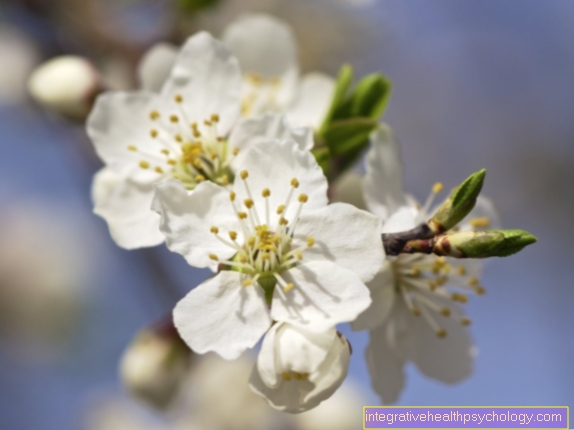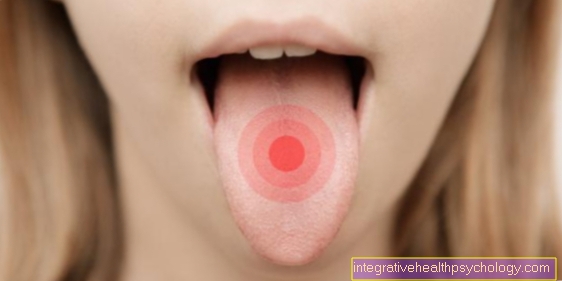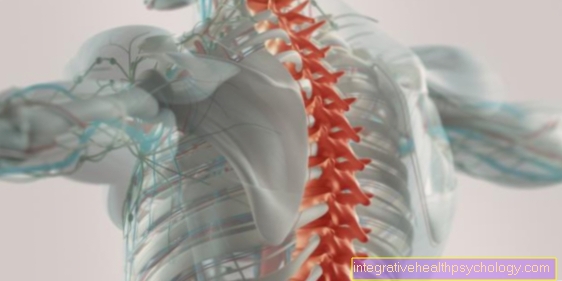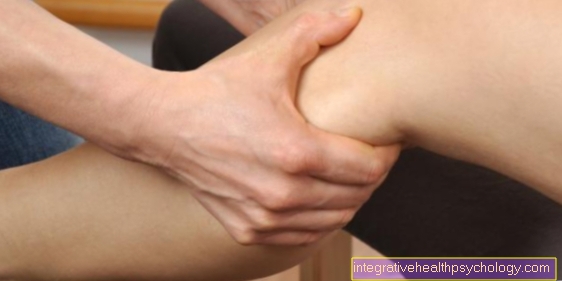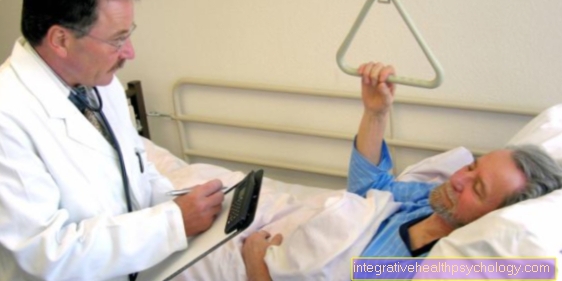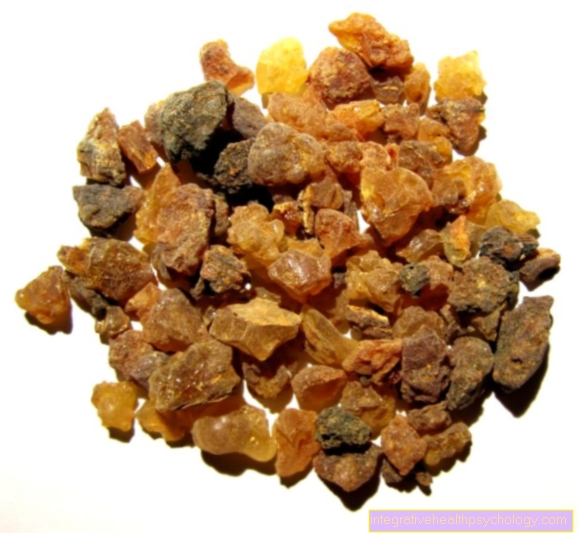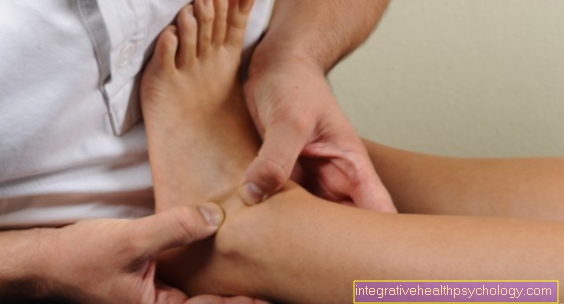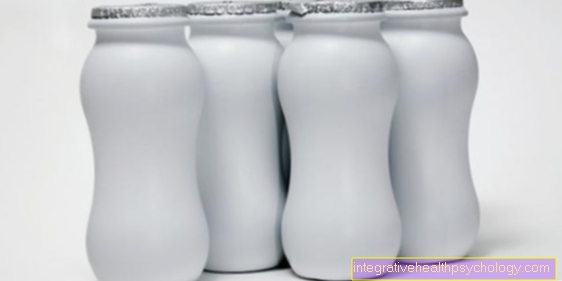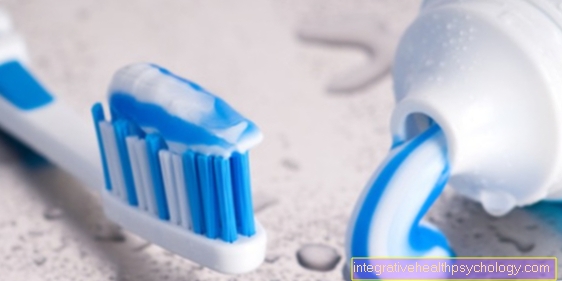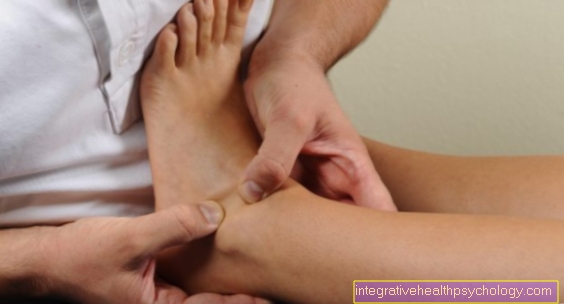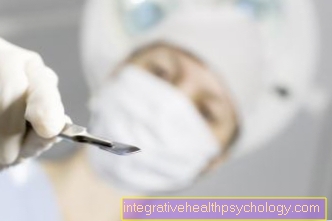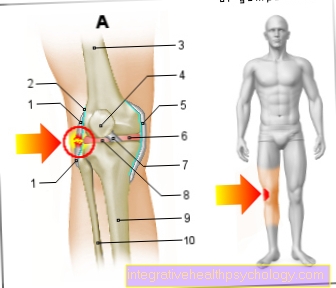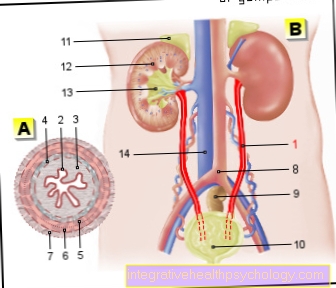lip
introduction
The lips consist of an upper lip (Labium superius) and a lower lip (Labium inferius). At the right and left corners of the mouth (Angulus oris) the lips merge. They contain muscle tissue and the crack in the mouth (Rima oris) forms the entrance to the oral cavity. On the inside they have an upper and lower lip frenulum (Frenulum labii superioris et inferioris), a connection to the jaw.
histology
The lips can be divided macroscopically into two different types of tissue.
On the outside there is skin that merges into the mucous membrane on the inside. It can be divided into 3 sections, which flow smoothly into one another, so that a clear border is not recognizable.
The outer skin (Pars cutanea) consists of a multilayered keratinized squamous epithelium and forms a protective barrier to the outside world. It is characteristically composed of several layers of cells lying on top of one another. These cell layers and the underlying tissue contain hair follicles, sebum glands (to keep the lips supple) and sweat glands. The keratinization is caused by dying special cells that Keratinocytes to be named.
The transition zone in which the actual lip red is located lies between the inside and the outside. This area will too Pars intermedia called. In this area there is also keratinized squamous epithelium, which is significantly thinner compared to the anterior zone. The connective tissue protrudes into the squamous epithelium; this is called the lamina propria directly below the cell layers. Many arterial capillaries run here that shine through the thin upper layer. This creates the strong red color of the lips. When the oxygen content in these capillary loops drops, the typical phenomenon of the blue lips (cyanosis) occurs.
The inner layer is lined with mucosal epithelium, an uncornified squamous epithelium. In addition to numerous vessels and nerve fibers, there are particularly many small salivary glands that form a viscous (mucous) Produce saliva. This keeps the lips moist and, like the larger salivary glands, is responsible for breaking down the food ingested.
Under this layer lies the muscle of the lips (Orbicularis oris muscle) embedded in the connective tissue. This is responsible for the movement of the lips.
Blood supply
The lips are very well supplied with blood. They receive the arterial blood flow from the Facial artery, an exit from the carotid artery (External carotid artery). This branches off again into an upper one Superior labial artery and a lower one Inferior labial artery to Care of the lips on.
The venous outflow into the takes place via several small veins Jugular veinthat run right and left in the neck and finally over the superior vena cava (Superior vena cava) flow into the right heart.
Innervation
The supply is through on the lips annoy very pronounced. Since the lips also contain muscle tissue, you need one motor innervationpassing through the facial nerve (Facial nerve) he follows. He also innervates everyone other muscles in the face.
The lips will also sensitively innervated, which is important for, for example, touching hot or cold food. The associated nerve is the Trigeminal nerve (Trigeminal nerve), which is divided into two branches in the area of the mouth (Maxillary and mandibular nerves) divided to supply the upper and lower lip.
Function of the lip
Ingestion
Even in infancy, the lips are of great importance. When sucking, they help to seal the female nipple tightly all around. The muscles of the lips make them very mobile and, together with the muscles of the cheeks, form the entrance and exit of the oral cavity.
Organ of touch
Due to the very sensitive innervation of the lips by means of free nerve endings, they are very sensitive to touch. They support the exploration of new, unfamiliar objects even in toddler age, as they are often put in the mouth by the children. The sensitivity to cold and heat is particularly important when eating and thus offers protection against eating too hot, for example.
facial expressions
The face conveys many different emotions by tensing the muscles in different ways. The movement of the lip muscles supports the numerous facial expressions such as smiling when happy, drooping the corners of the mouth when sad or pouting when angry. They are therefore also an important part of non-verbal communication and body language.
Language education
In addition to the vocal folds in the area of the larynx, the lips are important for the formation of various sounds and volume. Their integrated musculature enables the whistling and playing of some wind instruments.
sexuality
Full, round lips are often seen as a symbol of sensuality and are part of the woman's ideal of beauty in many cultures. The importance for sexuality becomes particularly clear when kissing. Due to the numerous nerve endings, they form a stimulating zone for many people and convey sexual excitability.
Lip frenulum
The Lip frenulum is in the jargon Frenulum labii called and located on the inside of the Upper lip. There it is in the middle of the upper one Incisors. It is a connective tissue structure that, however no important task performed. The lip frenulum is just a leftover.
A excessively pronounced lip frenulum can cause problems in the mouth. For example, this often results in a Tooth gapwhich can be accompanied by speech defects such as lisp. In this case, surgical transection of the lip frenulum is usually carried out in childhood.
If there are no more teeth in the jaw, the lip frenulum can have a negative effect on the prosthesis fit.
It should also be removed if it is very high in Gums is anchored and creates an uncomfortable pull in the movement of the lip.
Diseases of the lip
Herpes labialis
One of the most common diseases affecting the lips is infection with the herpes simplex virus. After the initial infection, this migrates along the nerve fibers to an accumulation of nerve cell bodies, the so-called Gangliathat sit deeper in the head. During menstruation or stress-induced, the virus can be reactivated and migrates along the nerve fiber to the lip, where it triggers an inflammatory reaction in the form of burning and itchy blisters.
Anyone who has ever had such an infection can get it more often. In contrast, many people also carry the virus within them without an outbreak of the infection. You can still carry the virus through contact, which can then trigger a reaction in the form of the symptoms described above in the newly infected person.
Cleft lip and palate
The cleft lip and palate is a malformation that has existed since birth in the area of the lip and the philtrum, the region between the upper lip and nose. The cleft palate occurs during the development of the embryo between the 5th and 7th week of pregnancy. Right and left nasal bulges emerge from the embryonic appendages, which merge into the upper lip in the course of growth. This can lead to disruptions, which can affect the upper lip alone or at the same time as the upper jaw and the palate. Depending on how severe the malformation is, the malformation can be remedied with very good cosmetic success after the birth.
cancer
Another possible disease on the lips is that Malignancy, a malignant change mostly on the lower lip. It initially expresses itself as a precancerous stage (Precancerous disease) and is called leukoplakia, a whitish change on the mucous membrane of the lip that cannot be wiped off and that extends over an ulcer to carcinoma can develop further. Other symptoms include swelling and pain in the lip area.
An extensive examination of the surrounding lymph nodes, the tongue and the adjoining throat area and possibly also the food duct is recommended. Common causes are excessive consumption of tobacco and alcohol. Poor oral hygiene or exposure to sunlight can also promote ulcer development. Depending on the severity and stage of the disease, an adapted therapy is selected, which includes treatment with cytostatic drugs and / or an operation. In most cases, the change on the lips is noticed very early on by the patient, so that there is a good chance of recovery.
Swollen lip
Lip swelling can be caused by different causes and its treatment can also vary.
Read more about the topic here: Swollen lip
Read more on the topic: Bruise on the lip



